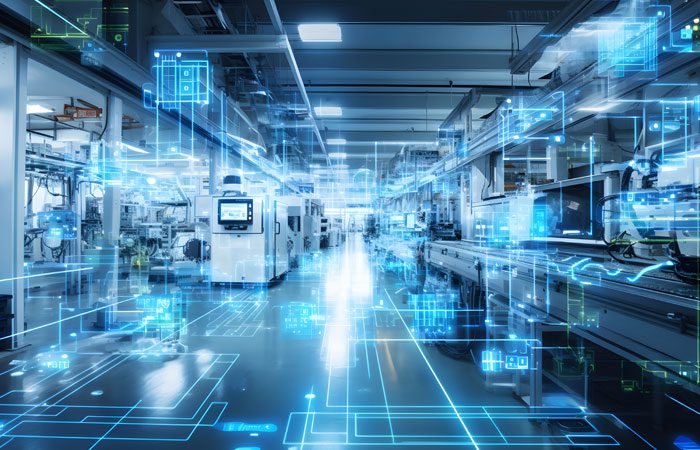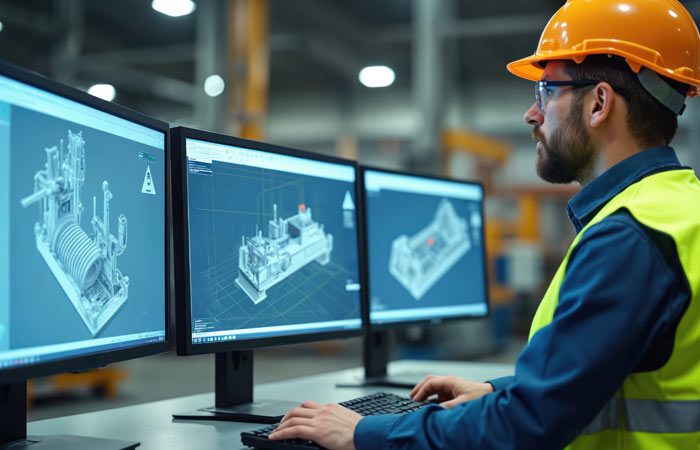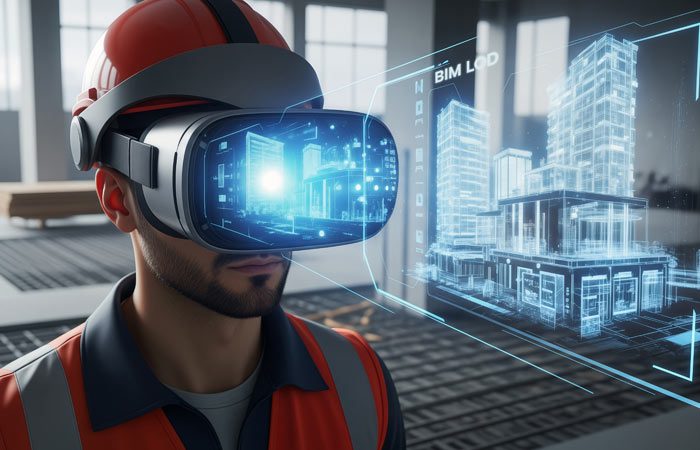
Digital Twins in Industrial Design: Bridging Concept and Reality
The way products are designed, built, and improved has changed more in the last decade than in the previous fifty years. We’ve moved from drawing boards to CAD, from static models to simulations—and now, from simulations to living digital replicas that evolve with the product itself.
This shift is powered by digital twin technology—the ability to create a virtual, data-driven model that mirrors the behavior of a physical product or system in real time. For engineers, it’s no longer just about seeing a 3D design on screen; it’s about understanding how that design behaves, performs, and interacts across its entire lifecycle.
What Exactly Is a Digital Twin?
A digital twin in industrial design is far more than a digital copy of a product. It’s a continuously updated virtual environment that reflects the physical asset’s geometry, materials, and performance parameters—driven by real-world data.
When a new component is tested in the physical world, the twin gets smarter. When the product faces environmental stress, usage data feeds back into the model. Over time, this loop allows designers to refine performance, predict failures, and optimize maintenance with unprecedented accuracy.
This is why many organizations are embedding digital twin engineering into their product development frameworks. It doesn’t just help visualize; it helps understand—how every nut, bolt, and circuit behaves under real conditions.
How Digital Twins Are Redefining Industrial Design
In traditional design, teams relied heavily on physical prototypes to validate ideas. But physical builds are expensive, time-consuming, and limited in what they reveal. A digital twin vs physical prototype comparison quickly shows why the industry is shifting.
A prototype might show what fails; a digital twin shows why it fails—and what can be done to prevent it.
By combining simulation in product design with real-time data, engineers can explore “what-if” scenarios—different materials, stress loads, or environmental factors—long before production begins. This helps refine the design much earlier in the process, cutting costs and compressing timelines.
For manufacturers, this also means digital twin product design can extend seamlessly into production. A twin created during concept design can evolve through digital twin manufacturing, linking directly with process data from machines, sensors, and control systems. It becomes part of a continuous improvement cycle—one that connects the factory floor with the design desk.
From Concept to Lifecycle: A Continuous Thread
One of the biggest breakthroughs of industrial digital twin adoption is how it unites the entire lifecycle—design, simulation, production, and maintenance—through a single digital thread.
Traditionally, these phases existed in silos. Designers built models, analysts ran simulations, manufacturers built prototypes, and operators handled performance. Each stage generated new data but rarely shared it efficiently.
Now, with product lifecycle management (PLM) platforms integrating digital twins, data flows both ways. Design teams receive live feedback from products in operation; maintenance teams access real design intent. The result is a continuous loop of learning and optimization that extends well beyond product launch.
For example, when a pump in a processing plant shows vibration anomalies, its digital twin can simulate the same condition virtually—pinpointing wear patterns or material fatigue before the issue escalates. That insight can then be used by the design team to improve the next generation of the pump.
This isn’t hypothetical—it’s how leading organizations are redefining asset reliability and design efficiency through digital twin engineering.
Real-World Applications of Digital Twin Technology
The real-world applications of digital twin technology span almost every industrial domain:
- Manufacturing: Factories now build twins of production lines to simulate throughput, machine wear, and downtime patterns. Digital twin manufacturing enables predictive maintenance and optimized scheduling.
- Aerospace and Automotive: Engineers create full-vehicle twins to model aerodynamics, stress distribution, and component interactions. These virtual systems undergo hundreds of tests before a physical prototype is even built.
- Energy and Utilities: Digital twins monitor turbines, pipelines, and grids to predict failures and extend asset life.
- Product Design: For consumer or industrial equipment, simulation in product design is enhanced by twins that evolve with each design revision, helping teams validate performance digitally before physical trials.
Each of these examples demonstrates how the benefits of digital twins in industrial design go beyond cost savings—they fundamentally change how teams think about risk, iteration, and product evolution.
The Human Side of the Digital Twin Revolution
Despite the technology’s sophistication, digital twins don’t replace engineers—they empower them. Real innovation happens when intuition and data work together. Engineers can now visualize the ripple effects of design decisions instantly. A material substitution, a geometry tweak, or a change in load path can be simulated, tested, and optimized—all without building a single part.
This integration of data and human judgment makes digital twin in industrial design not just a digital transformation buzzword, but a genuine design philosophy. It bridges imagination with reality.
Looking Ahead: The Future of Digital Twin in Engineering
As sensors become smarter and connectivity improves, the future of digital twin in engineering will move toward complete ecosystems—where products, processes, and people are all connected.
Imagine a future where every physical product has a living digital companion: an industrial robot that self-optimizes its performance; a wind turbine that predicts wear before it happens; or an assembly line that continuously learns from global production data.
This convergence of digital twin product design, manufacturing data, and AI-driven analytics will redefine what we mean by “product performance.” Companies will no longer just deliver products—they’ll deliver evolving systems that improve over time.
A Partner’s Perspective
TAAL Tech, a global engineering services provider, has been applying digital twin technology across multiple industrial sectors—helping clients shorten design cycles, simulate real-world conditions, and improve asset reliability. Through its digital twin engineering and industrial digital twin capabilities, TAAL Tech supports OEMs and manufacturers in connecting their physical products with live digital intelligence, driving efficiency from concept to commissioning.
In Closing
The real power of digital twins lies in their continuity. They don’t stop at design approval or production—they keep evolving, learning, and guiding decisions across the product’s life.
For those who adopt it early, digital twin product design is not just about innovation—it’s about resilience. In a world where speed, precision, and adaptability define success, digital twins are the bridge between what engineers imagine and what the world eventually experiences.


